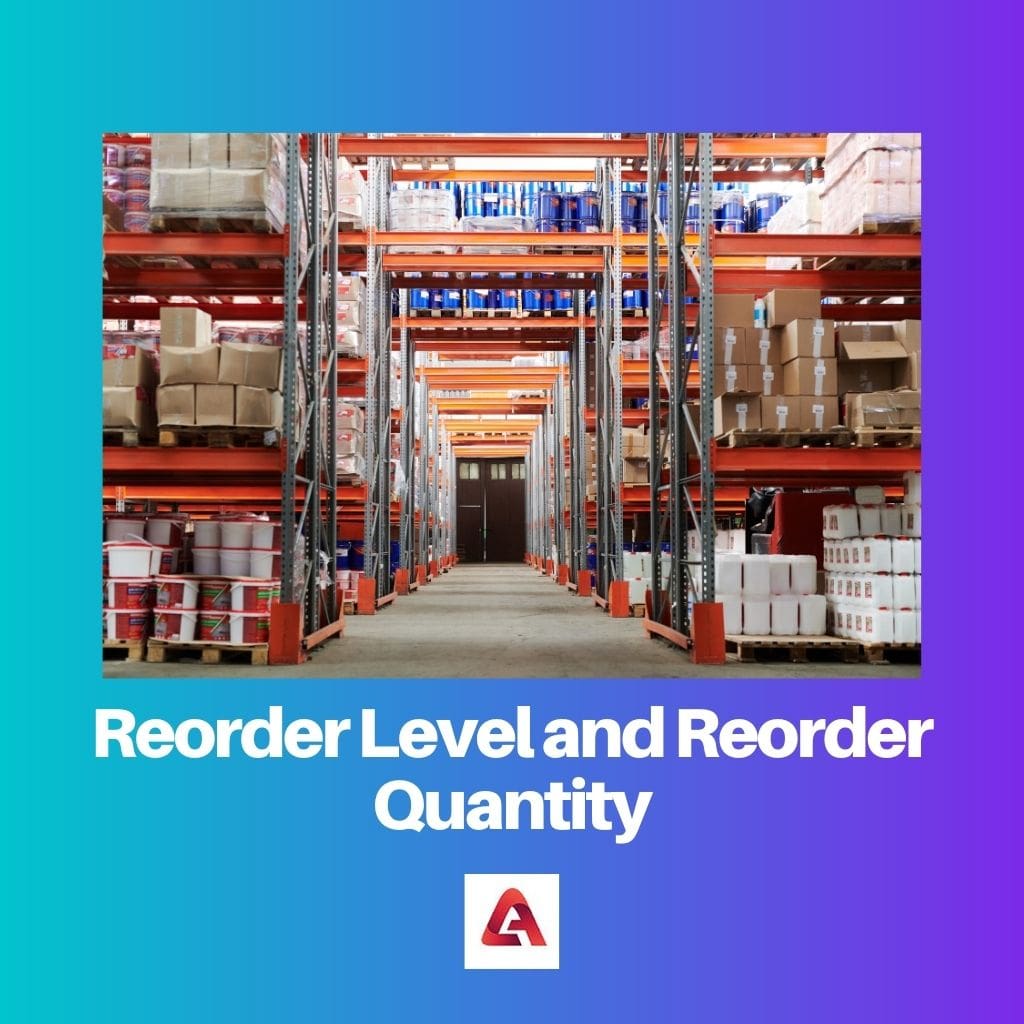The production makes or manufactures different products consumers require with the available raw materials. The raw materials can also be purchased and are done so in bulk quantities.
Since the same raw materials would be required throughout the item’s production, there were particular terms for it. The terms that deal with ordering and reordering these raw materials are: reorder level and quantity. So what is the difference between them?
Key Takeaways
- Reorder level is when inventory levels are low enough to trigger a reorder; reorder quantity is the amount of inventory to be reordered.
- Reorder level is determined by considering factors such as lead time, demand, and safety stock; reorder quantity is based on the quantity needed to reach the desired inventory level.
- Reorder level is a trigger point for initiating the reorder process; reorder quantity determines how much inventory to order.
Reorder Level vs. Reorder Quantity
Reorder level is when a business needs to order more inventory to avoid stockouts. Reorder quantity is a business’s inventory to replenish its stock to the desired level. It is determined by considering the carrying cost of holding inventory and the cost of placing an order.

Reorder level is the list that accounts for the materials and products in a company. This decides when the order of new stock materials needs to be placed. It is a strategic decision that requires knowing if new material is required.
Reorder quantity is the amount ordered in the new inventory’s purchase list. This decided how much of the new stock or material was required, and it was a tactical decision.
Comparison Table
| Parameters of Comparison | Reorder Level | Reorder Quantity |
|---|---|---|
| Meaning | It is the stock level of a particular inventory in the company whose order needs to be placed for a fresh supply. | Quantity or the magnitude of the materials to be ordered in the purchase list for the new inventory. |
| Nature | Decides if and when the order of new stock materials needs to be placed. | Decided how many or the quantity of the new stock materials will be purchased in the order. |
| Decision type | Strategic decision | Tactical decision |
| Main external factors | The lead time is taken to supply the products | Cost of freight and big order discounts |
| Risk factors | Out of stock or disruption in the unit during production. | The high cost of the unit or not giving the appropriate pricing to the final production unit. |
| Stability | Is stable with little to no changes | It is very unstable as they can vary for each order. |
What is the Reorder Level?
Reorder level is the stock level in a company that keeps a list of the required and existing materials for the inventories. It decides whether a new order needs to be placed and when?
The internal factors that affect this are the maximum usage of the product during lead time. The external factor is the lead time to supply products to the production unit.
The formula for calculating reorder level is:
(average daily usage rate) x (lead time delay)
The main risk factors include the material being out of stock or any disruption occurring in the unit during production. Otherwise, it is very stable.
What is the Reorder Quantity?
Reorder quantity is the amount of raw material that needs to be added to the purchase list for the new inventory. The decision of how many units need to be ordered is taken care of by the reorder quantity formula.
The formula for reorder quantity is:
Square root (2 x quantity x loss per order/carry lost per order)
The internal factors affecting reorder quantities are the order’s delivery cost and the cost per unit. It also depends on external factors like the cost of freight and big order discounts. The main risks included are the high cost of one unit and the company being lost. The order is also very unstable.
Main Differences Between Reorder Level and Reorder Quantity
- Reorder level refers to the stock level of a particular inventory in the company whose order needs to be placed for fresh supplies. While reorder quantity maintains the magnitude or amount of the materials to be ordered in the purchase list for the new inventory.
- The reorder level decides when the order for the new material stocks has to be placed, whereas reorder quantity decides the amount or quantity of the new stock that is to be placed an order.
- Reorder level is a strategic decision as it involves knowing whether new stock material is required now or not. On the other hand, reorder quantity is a tactical decision made after the reorder level as it decides the amount of stock.
- The main external risks of reorder level include the lead time taken to deliver the materials needed for the new inventory. The main external risk for reordering quantity is the freight cost and the big order discounts.
- For the reorder level, the risks involve the materials being out of stock when ordered or a disruption in the unit during production. For reorder quantity, it is the high cost of one unit and the loss they could face because of it.
- Reorder level is very stable as it sees little to no change in the order. Reorder quantity is unstable since the required materials can change for every order.


